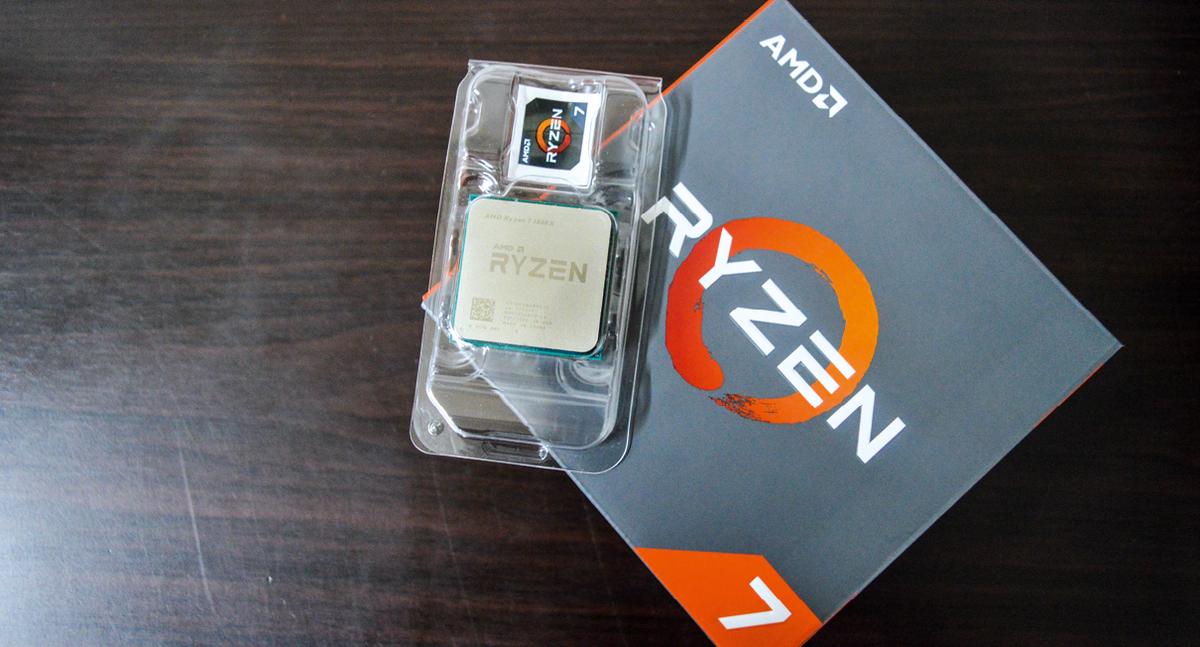Fans of AMD have been waiting for the company to release a new generation of high-end performance desktop processors ever since the launch of its last FX series of processors under its Piledriver microarchitecture back in late 2012. After the Piledriver-line of FX processors was released, it seemed as if AMD was throwing in the towel and conceding the high-end market to Intel in favor of its dominance in the entry-level market with their line of APU processors. But in 2015, the company unveiled the new Zen architecture, which signaled the company’s return to the high-end CPU market.
DESIGN 5.0 / 5.0
The Zen architecture, which Ryzen is built on, is a completely new architecture designed by AMD based on Samsung’s 14nm FinFET process. While the Zen architecture was originally unveiled in 2015, it wasn’t until the middle of 2016 when the excitement for the company’s new processors reached its peak due to AMD showing off a preview system running a Zen-based processor. And after months of anticipation, AMD finally unveiled the Ryzen 7 series of processors, its new generation of high-end performance CPUs.
HARDWARE 5.0 5/ 5.0
The Ryzen 7 series is available in three different models including the 1800X, the 1700X, and the 1700. While all three models feature the same number of cores and threads (8 and 12, respectively), they differ mainly in their out-of-box base and boost clocks as well their TDPs (Thermal Design Power). The Ryzen 7 1800X is the top-end variant of the series. Apart from the aforementioned 8 cores and 12 threads, it features a base clock of 3.6GHz, a boost speed of 4.0GHz, an L3 Cache of 16MB, and a TDP of 95W, among others.
To help us with our Ryzen 7 1800X review, AMD supplied us with a few components to go along with the CPU itself including a motherboard, RAM, and a cooler (since the 1800X doesn’t come with a cooler in the box). Here’s our test setup:
Motherboard: Gigabyte Aorus AX370-Gaming 5
RAM: Corsair Vengeance LPX DDR4 16GB (2x8GB) at 3000MHz
Cooling: Noctua NH-U12S SE-AM4
PSU: Seasonic M12II Evo 620 Watts
Storage: HyperX Savage SSD (256GB)
GPU: NVIDIA GeForce GTX 1070 (8GB)
OS: Windows 10 Pro

USER EXPERIENCE 4.0 / 5.0
To test out the Ryzen 7 1800X, we ran it through several benchmarks including the single and multi-core tests of Maxon’s Cinebench R15 as well as the built-in benchmark tools of Rise of the Tomb Raider and Ashes of the Singularity.
The Ryzen 7 1800X performed quite impressively in our synthetic benchmarks with only one area of concern. In Cinebench R15, it was able to get a multi-core score of 1617 and a single-core score of 158, which beats out Intel’s i7-6900K’s multi-core score of 1465 but slightly falls behind the Intel chip’s single-core score of 157.
Sadly, the 1800X also fell behind the i7-6900K in our gaming benchmarks as it was only able to achieve an average frame rate of 103 fps in Rise of the Tomb Raider while the 6900K was able to achieve a faster average framerate of 132 fps. In Ashes of the Singularity, the 1800X achieved a framerate of 71 fps while the 6900K achieved a significantly higher framerate at 90 fps. Nonetheless, the performance of the 1800X is still incredibly impressive.
As for its temperature performance, the 1800X was a mixed bag. In idle, it ran pretty hot at an average of around 60-degrees, which is quite hot for a processor at idle, while it only went up as high as 74-degrees during heavy load, which is impressive. But according to AMD, the 1800X (and the 1700X as well) have a +20-degree temperature offset on the readings displayed by monitoring software at the time of this writing. So the 1800X is actually running quite cooler than what the numbers above show, specifically by 20-degrees, if AMD’s announcement is true.
VALUE 5.0 / 5.0
Overall, while the Ryzen does have its weaker points, specifically in its gaming performance and temperatures, promised updates from AMD as well as video game developers getting more time with the Zen architecture could only mean those issues will eventually be remedied. And with its impressive performance in other areas coupled with an SRP of only PHP 27,000, the AMD Ryzen 7 1800X offers a price-to-performance ratio that is incredibly hard to match. Especially considering the Intel Core i7-6900K is priced at more than double the 1800X at around PHP 58,000.
The long wait for AMD’s return to the high-end performance processor market was definitely worth it. And the Ryzen 7 1800X is a great chip to lead the renewed charge. Things can only get better from here for AMD, its fans, and anyone who wants an impressive high-end desktop processor without completely breaking
the bank.
Bottomline:
The Ryzen 7 1800X offers amazing performance coupled with a great value proposition over its competitors and should be highly considered.
Also published in GADGETS MAGAZINE April 2017 issue
Reviewed by Martin Patiño
